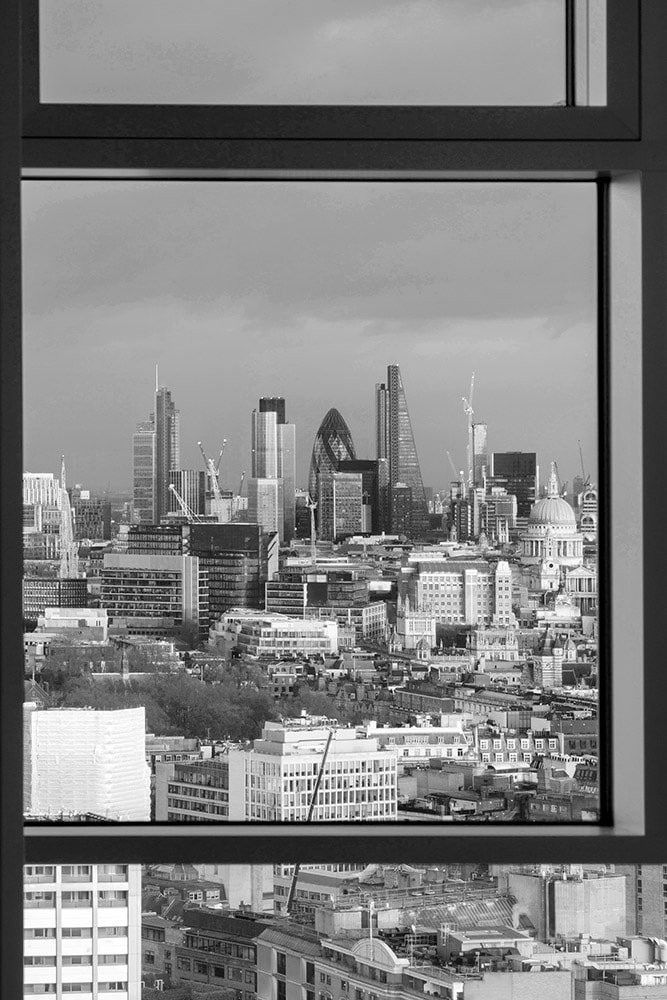




The spectacular double-height reception with its original staircases and commissioned artworks offers a dramatic welcome. The selection of every material, colour and detail was inspired by the distinctive character of the original building: the graphic, three-dimensional confidence of its exterior façade; the bold use of pattern and contrast in the 1960s mezzanine level, where white Carrara marble is cast into black terrazzo; and other surviving elements of the original bespoke ironmongery, joinery and tiling. Staff on the door, at reception, and in the concierge team are always ready to welcome you home and to offer whatever service you require with discretion, assurance and a smile.
Team
1960s
Centre Point has always caught the eye and the imagination. Even when it was still under construction, Londoners marvelled at the pioneering building process that allowed it to be put together so quickly. Once finished, its captivating geometric design, delicate honeycomb façade and towering presence made the building an instantly recognisable landmark – with Londoners and tourists alike using it to get their bearings. And then, of course, there are the letters of the Centre Point sign itself, beaming the building’s name across the city skyline. Time has made it an icon – a national treasure – a status confirmed officially when it was listed for protection by English Heritage in 1995. It is a building like no other.


Centre Point has always caught the eye and the imagination. Even when it was still under construction, Londoners marvelled at the pioneering building process that allowed it to be put together so quickly. Once finished, its captivating geometric design, delicate honeycomb façade and towering presence made the building an instantly recognisable landmark – with Londoners and tourists alike using it to get their bearings. And then, of course, there are the letters of the Centre Point sign itself, beaming the building’s name across the city skyline. Time has made it an icon – a national treasure – a status confirmed officially when it was listed for protection by English Heritage in 1995. It is a building like no other.



















